It’s been a while since I’ve shared reviews of museums in London. Now I have a few of them to share, and the first one is Museum of London Docklands. The museum is located in the Isle of Dogs, so in a very interesting location. When you walk along all the sky scrappers, it seems like you are in another country. I imagine it feels more like New York than London. The same charity that operates Museum of London (see my post from 2015) is taking care of Museum of London Docklands too.
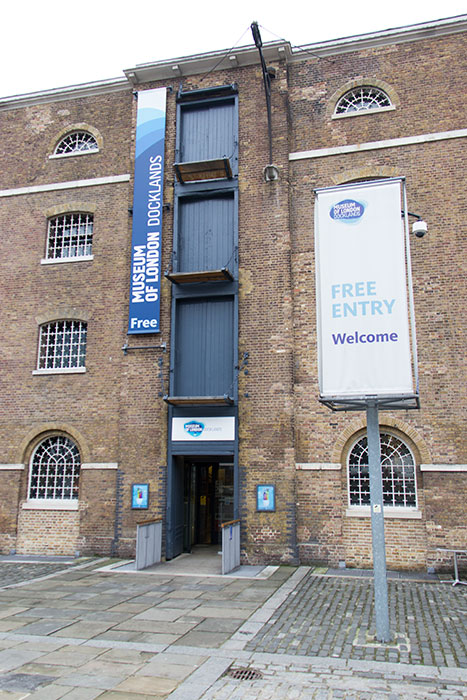
For me, the only thing that can be improved at the museum is the staff. The lady that greeted us managed to annoy me with a puzzling question, then went on to say that, if we have questions, we can ask any room guide. Well, when we visit it, there weren’t any room guides. Anyway, not a big thing.
The visit of the museum starts at the third floor, with the No.1 Warehouse gallery. There are different talks during the day, but we didn’t attend any of them.
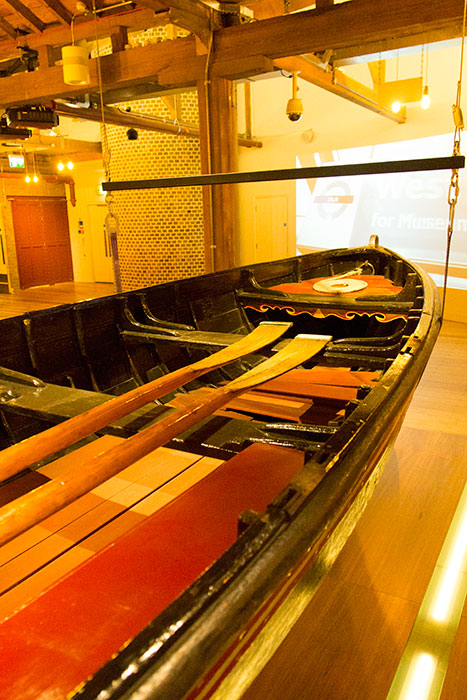
How lovely is this boat. I’m not sure how old it is, but it’s so appropriate for a dockland museums, isn’t it?
No.1 Warehouse is one of the oldest in London. In it cargo would have been kept, in a safe location. The goods would have been weighted and sampled. Customs and Excise Officers, merchants, and dock managers needed to know the quality of the goods.
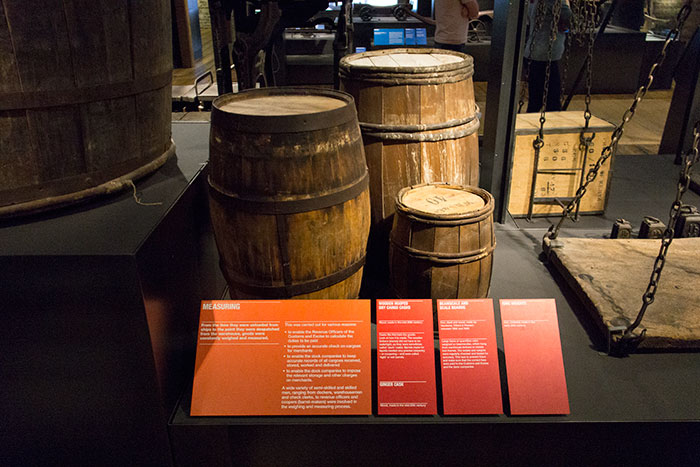
As you can see, the barrels would have been put on this big scale to weight it in. The three barrels date back from the 19th century and 20th century.
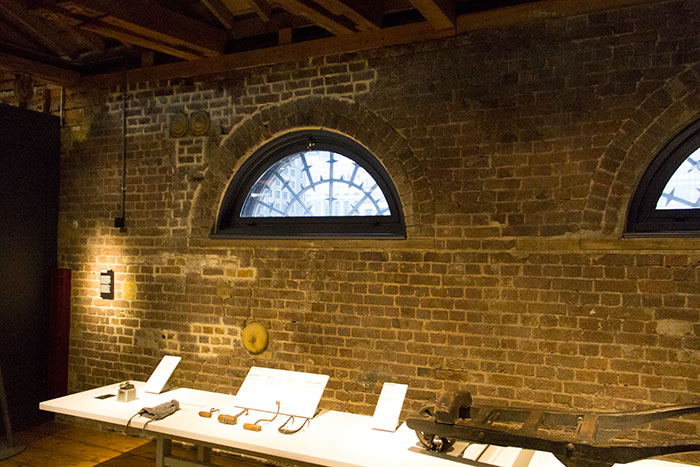
Security was so important that even these windows have spiked metal frame. That was quite unusual, as we were at the third floor. On the table there are four hooks, used for carrying different types of goods, like coffee, barrels, paper, and wool.
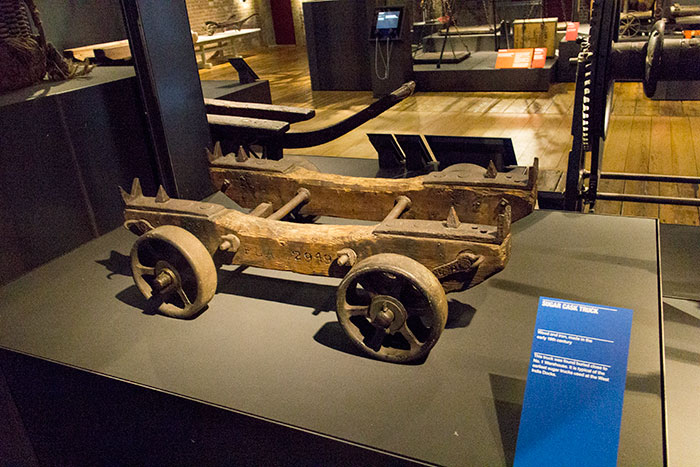
This is a sugar cask truck, from the 19th century. It was found buried near the museum.
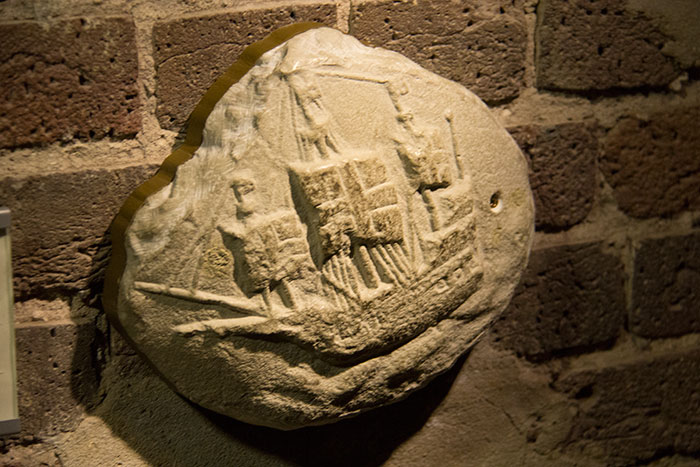
East India Coat of Arms, that dates back to 1618. The East India Company was established in 1600, under royal licence. This coat of arms is from the main gateway to Blackwall Yard, the second yard used by the company.
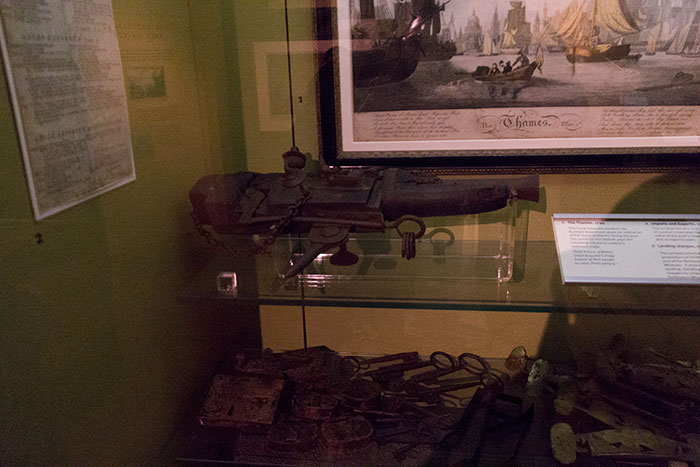
In the next gallery I noticed this trap gun from late 18th century. It would have been positioned in a pivot, it could swung and fire if an intruder moved a trip wire. It was used without lead shot, only to scare off intruders. I found it quite fascinating.
One of next galleries is dedicated to slavery. I think it should be made more clear how slavery worked. The slaves weren’t gathered up by Europeans and hurdled into ships. They were sold, as commodities, by other Africans, in return for goods. The slaves would have been prisoners of war between different tribes. If more emphasis would be put on this, maybe we would all know better what happened and what still happens in Africa, today.

In this painting, the two ladies are cousins, but the difference in how they are treated is so obvious. They lived at Kenwood House, Hampstead. Kenwood was on my list of things to see, but we didn’t have enough time to go and see it this time.
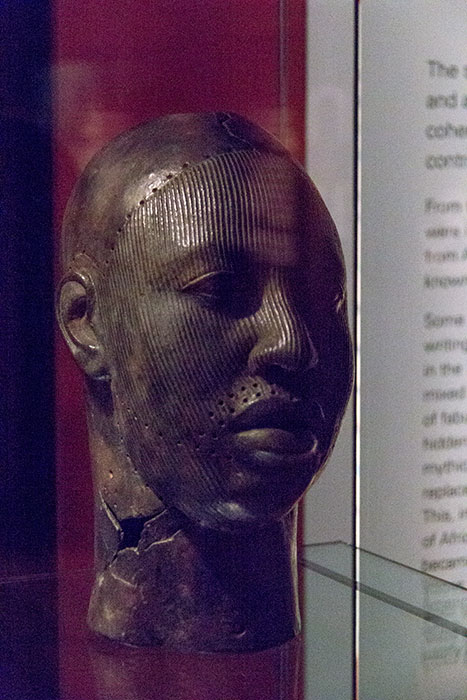
At that time when slave trade was booming, in Europe was believed that Africans were savages. So, Europeans were doing them a favour to civilize them. This is a cast of the head of a Yoruba man from 1100-1400, before the Europeans arrived in Africa. The level of details is amazing, and the craftsmanship too.
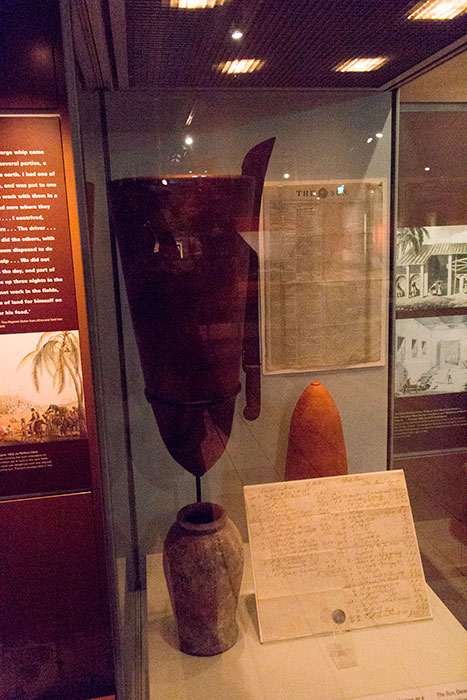
This is how sugar was made into sugarloafs, using a earthenware molasses jar, from 1600s.

West India Dock Company mace, from 1801. It was made from sugar cane.
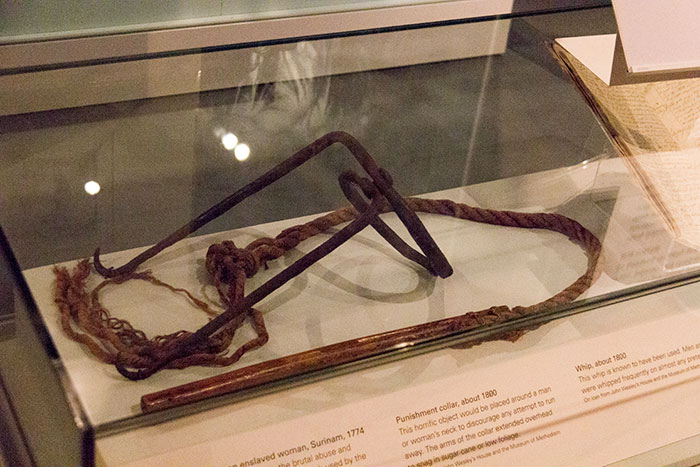
Devices used for punishing slaves.

Souvernir made from marble, with a painting of the Old London Bridge, from 1831-1833.
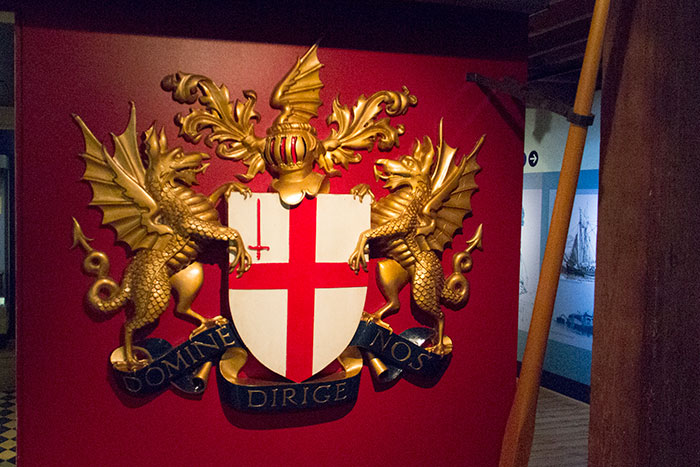

Warehouse keys from St. Katharine Docks. Don’t they look amazing?

Another gallery talks about the police force and its history in London.
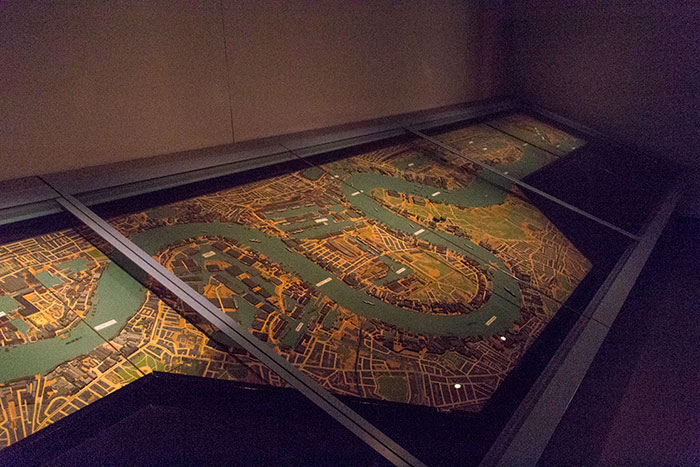
This is a map of the port of London, as it was in 1938.
The next gallery is dedicated to the First World War.
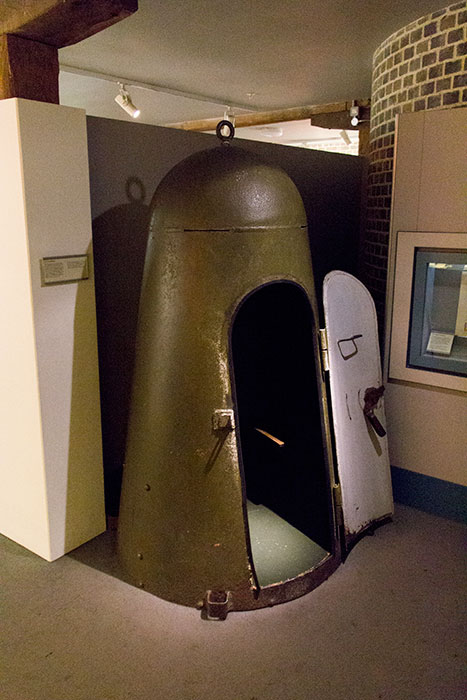
This is a steel Consul shelter for two people. It would have been used by personnel working outside during German attacks. The shelters could be re-positioned if necessary. It was used by Policemen or Fire Wardens.

A molten column from 1940 found on London Dock during demolition in 1980. The heat from fires started by bombs during the Blitz melted the metal. The description of the artifact mentions that 1525C degrees are needed to melt iron.
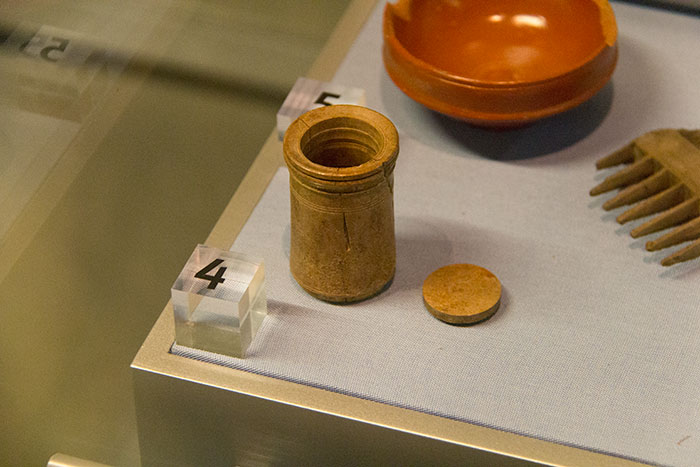
At the end, there are some Roman artifacts, like this bone box with lid that was used for cosmetics. It was imported from Catalonia, Spain.

I’ve enjoyed my visit to the museum. It’s a must see in London, from my point of view. As the museum has 10 galleries over 3 storeys, I would suggest allowing 2 – 3 hours to visit it.
Museum of London Docklands is on No.1 Warehouse, West India Quay, London E14 4AL. The museums is free, but donations are welcomed. Behind the museum there is a car park, on Hertsmere Road, that is affordable (for London). We’ve paid a bit over £6 for 3+ hours. Of course, there are plenty of public transport options, as the closest tube is at Canary Wharf.

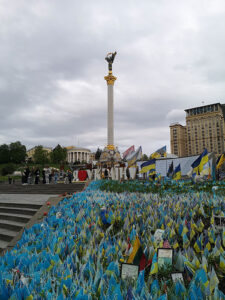



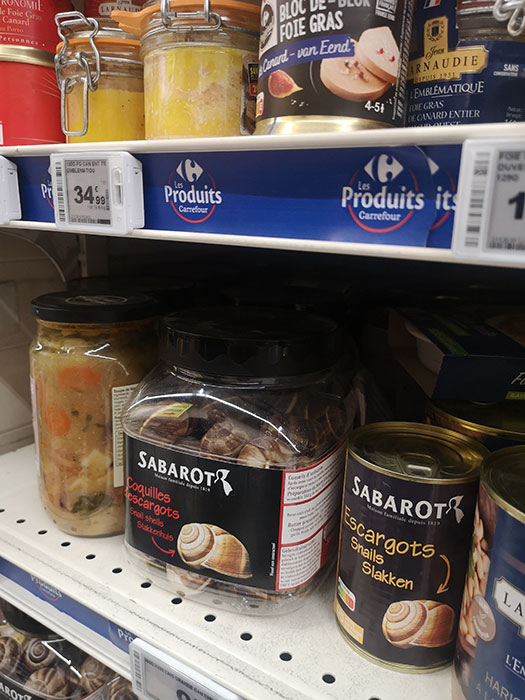


This sounds like such an interesting museum! There’s a lot of history here that I’m not as familiar with as I feel I should be, I’ll definitely bear it in mind for next time I’m in London!
This museum honestly seems amazing! Believe it or not I have never actually been and I would die to go so fingers crossed I do! 🙂